Discussing Vietnam Agriculture Newspaper, Dr. Dang Kim Son, Former Director General of the Institute for Policy and Strategy for Agriculture and Rural Development (IPSARD), analyzed: Vietnamese rice has unique value and an important role that needs to be viewed from many aspects, while still opening up issues that make us continue to think and act. The ultimate goal must be to protect rice farmers' rights, harmonize consumers' interests, and promote the country's strengths fundamentally, both in the immediate and long term.
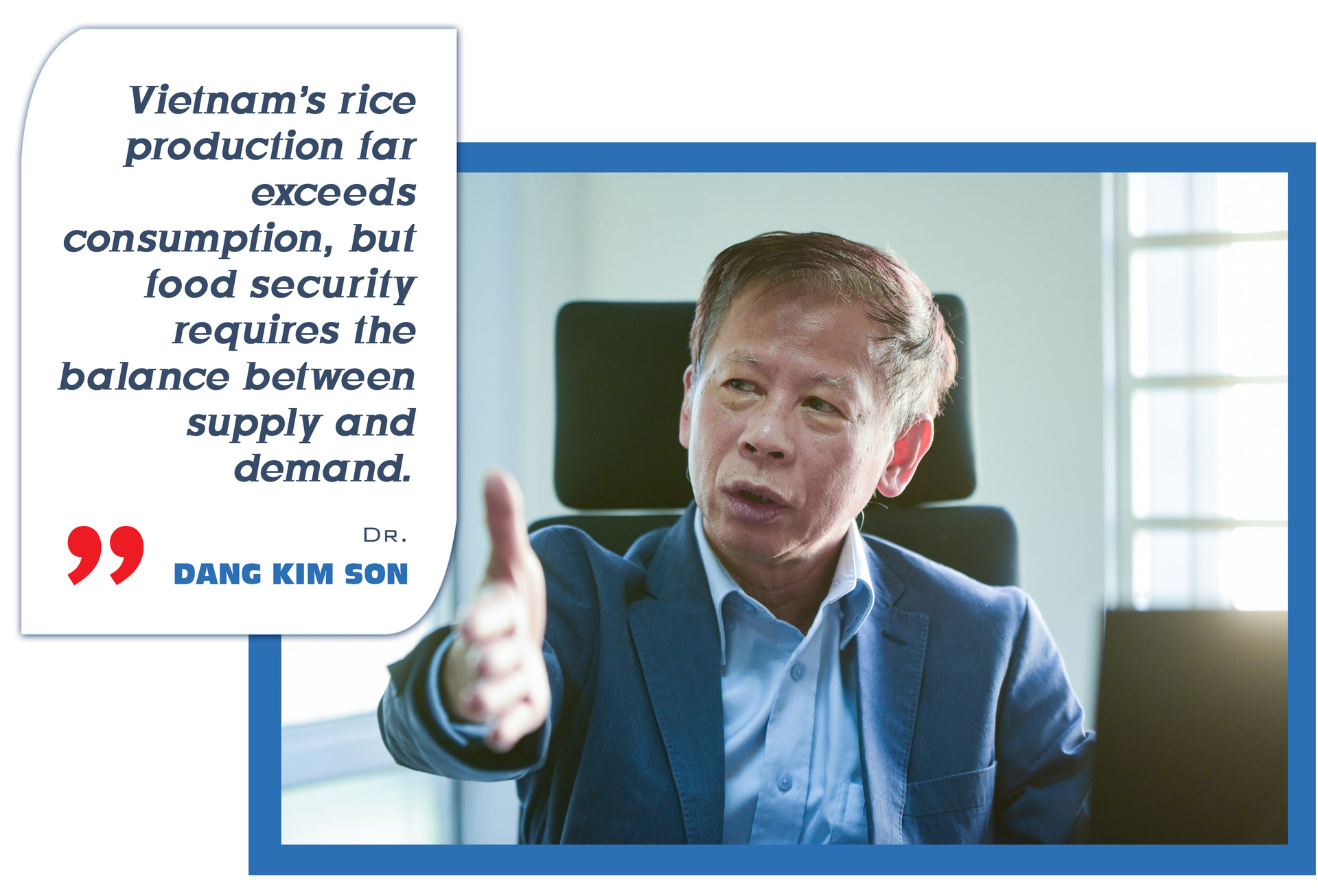
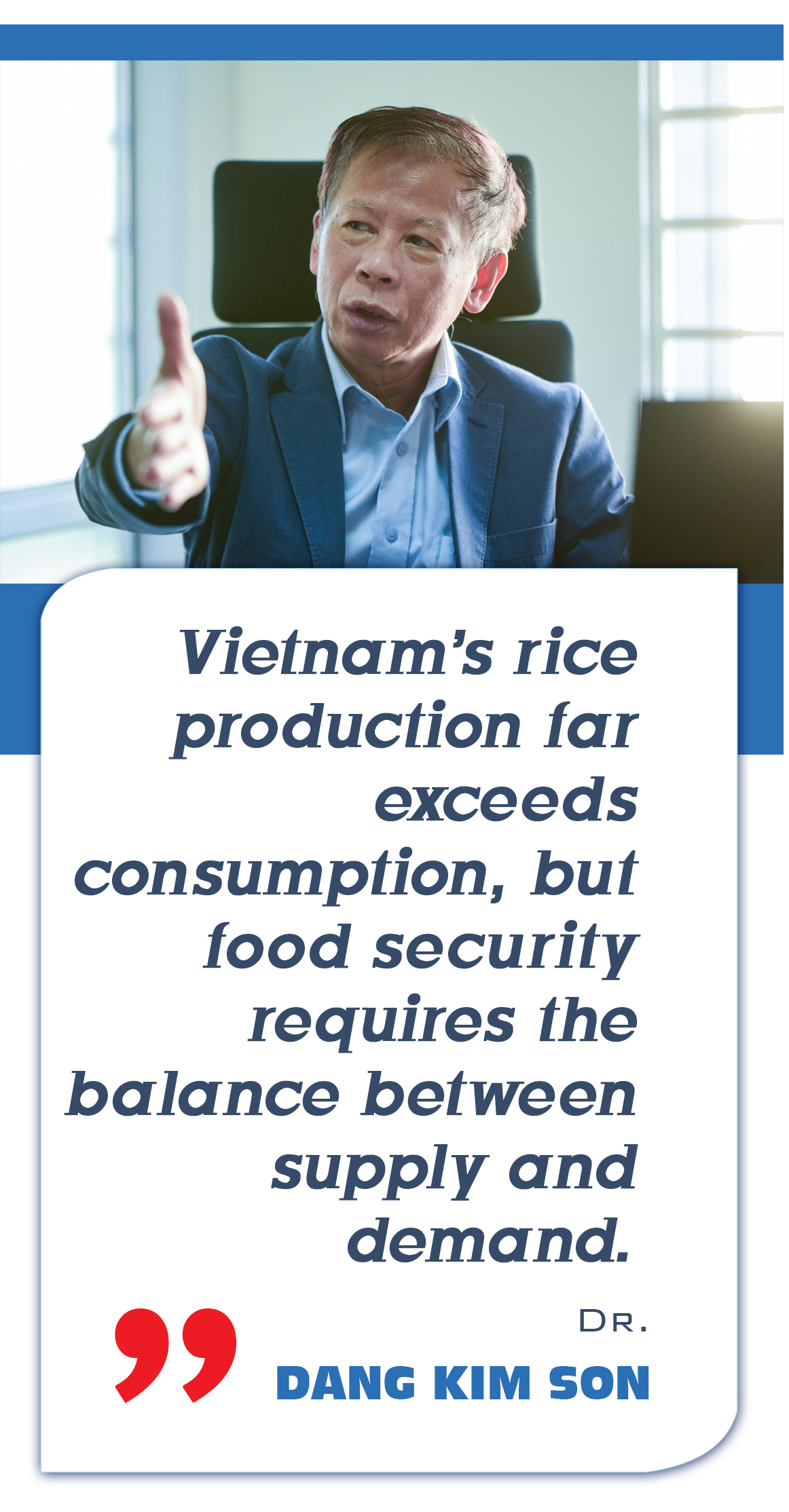
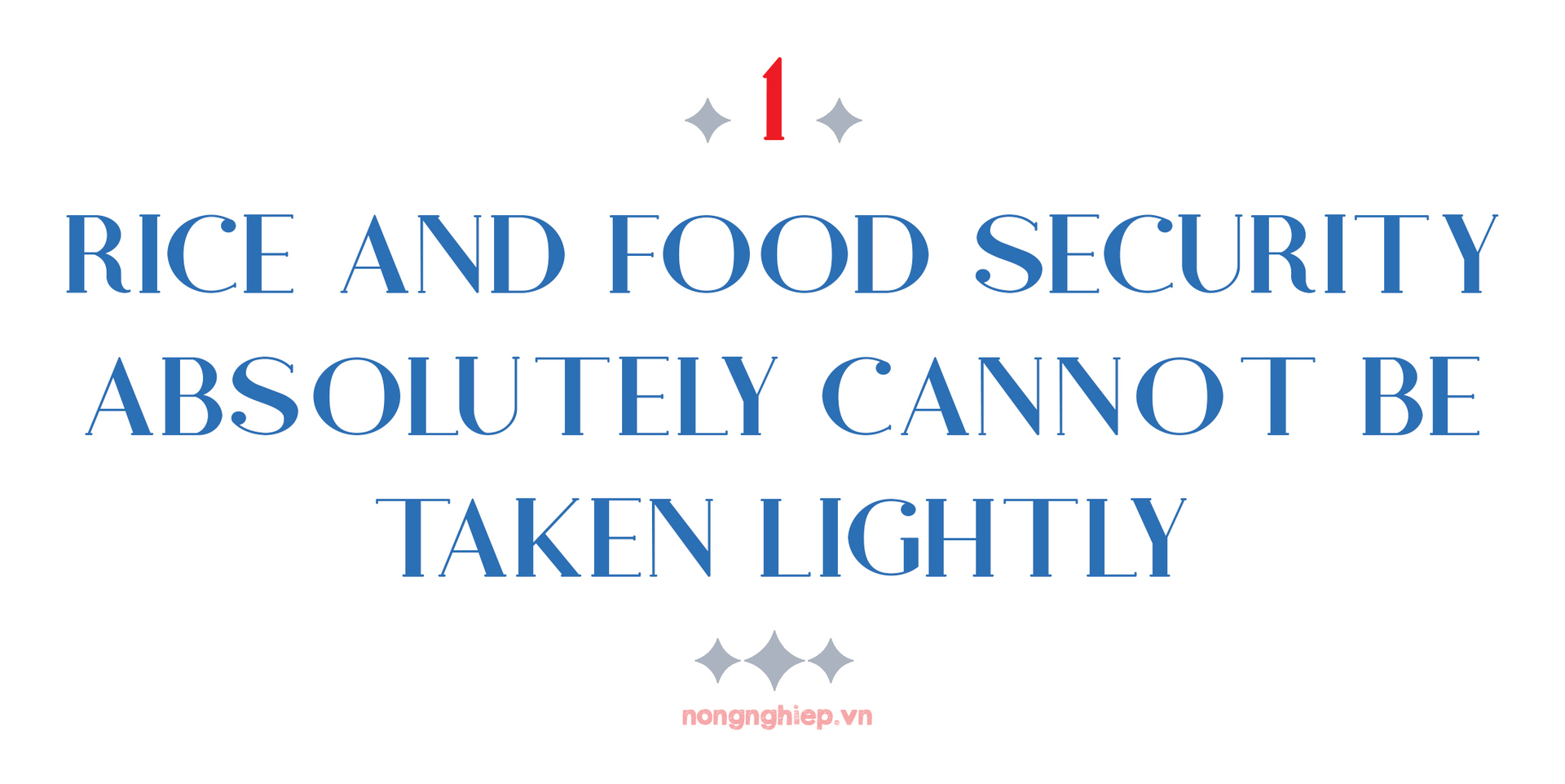
Vietnamese rice is associated with food security issues in the country and worldwide. In Vietnam, many people think that since it has been the world's leading rice exporter for many years, is there anything to worry about food security? Indeed, our country's rice production consistently exceeds consumption, but food security is not only seen from the perspective of balancing supply and demand.
The first problem is price fluctuations. Market mechanisms have helped connect food markets very effectively. However, in the past, there were times when natural disasters disrupted local transportation, epidemics disrupted value chains, misinformation, etc., causing consumers to rush to buy and store food in some places in 2008 or the recent COVID-19 epidemic. In the future, if there are significant fluctuations in the international market regarding large-scale rice trading, both unofficial and official, it will be inevitable that domestic prices will increase. Increasing rice prices will directly affect about 1 million multidimensionally poor households, who spend more than a quarter on rice.
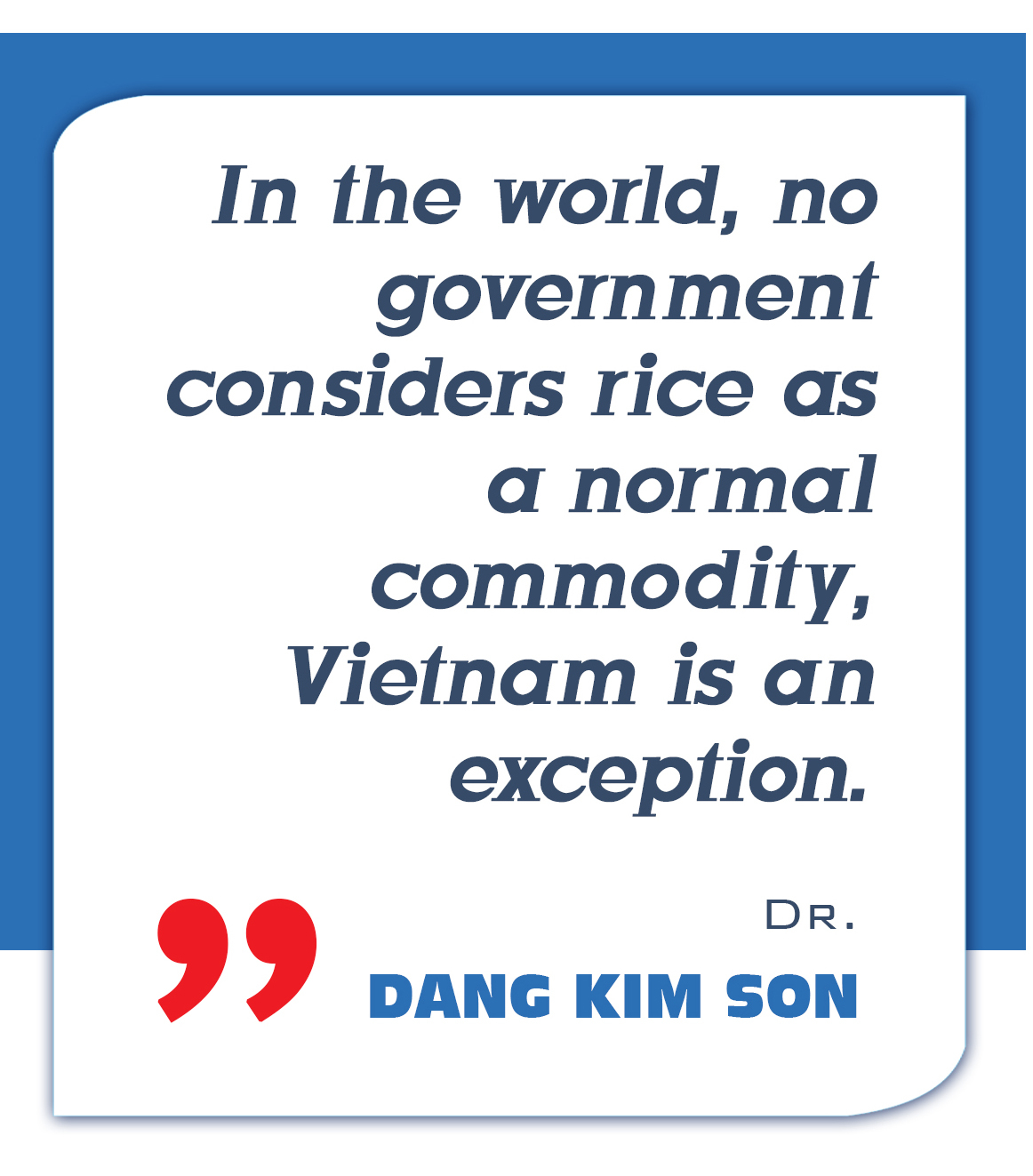
The second issue, food security, is linked to people's livelihoods. In the context that more than 60% of the total number of workers, contributing 3/4 of the jobs of the entire economy, are living and working in an informal position without contracts, insurance, or benefits protection if they encounter personal changes such as illness, accident, maternity or external impacts such as natural disasters, epidemics, crises, etc. they will lose their livelihood, lack money to buy salaries, food, food. We have seen that during the COVID-19 pandemic, millions of people had to leave industrial zones and urban areas in the South to return to the countryside to make a living.
The third issue is food security from the hygiene and food safety perspective. Although there has been a lot of progress, there are new puzzles. Vietnam's rice grain today has met the standards of fastidious markets and has improved very quickly. However, there are still problems of water pollution, land degradation, air pollution, and biodiversity loss. In big cities, rice consumption from 9.7 kg/person/month in 2010 has decreased to 7.6 kg/person/month in 2020. Income increases, people are more interested in the amount of sugar in starch, want to eat rice with bran, organic and traditional rice, etc. In other words, a country transitioning to middle income will have different requirements than the standard for an income country short.
The fourth problem is that agricultural production is transforming into an agrarian economy. Although Vietnam is the world's leading rice exporter, it still has to import much rice. In 2022, more than 1.64 million tons of rice and broken rice were imported to make noodles, cakes, animal feed, beer and wine production, export processing, etc. Vietnam has imported 1 million tons of rice from Cambodia, 640 thousand tons from India, and a tiny amount for diverse needs from Thailand, China, and Laos. When the price of rice and other agricultural products fluctuates on the world market, it will cause the cost of animal feed, seafood, and raw materials for processing factories to increase, directly affecting businesses and consumers. Use Vietnam.
Also, about food security, if you look at the world, rice is the daily food of more than 3.5 billion people, more than half of the global population, and the majority of the world's poor in Asia and Africa. Most countries try to produce enough for consumption. Rice exports only account for nearly 10% of global global rice production. If there is a surplus, the price will decrease, but if there is a shortage, the price will skyrocket. Because of its close connection with economic life and political stability, almost all over the world, no government considers rice a regular commodity. On the one hand, they subsidize production and consumption; on the other hand, they purchase large reserves when there is risk, so rice prices do not closely reflect the cost relationship between input and output. Competition in the world market is not only between farmers but also between governments.

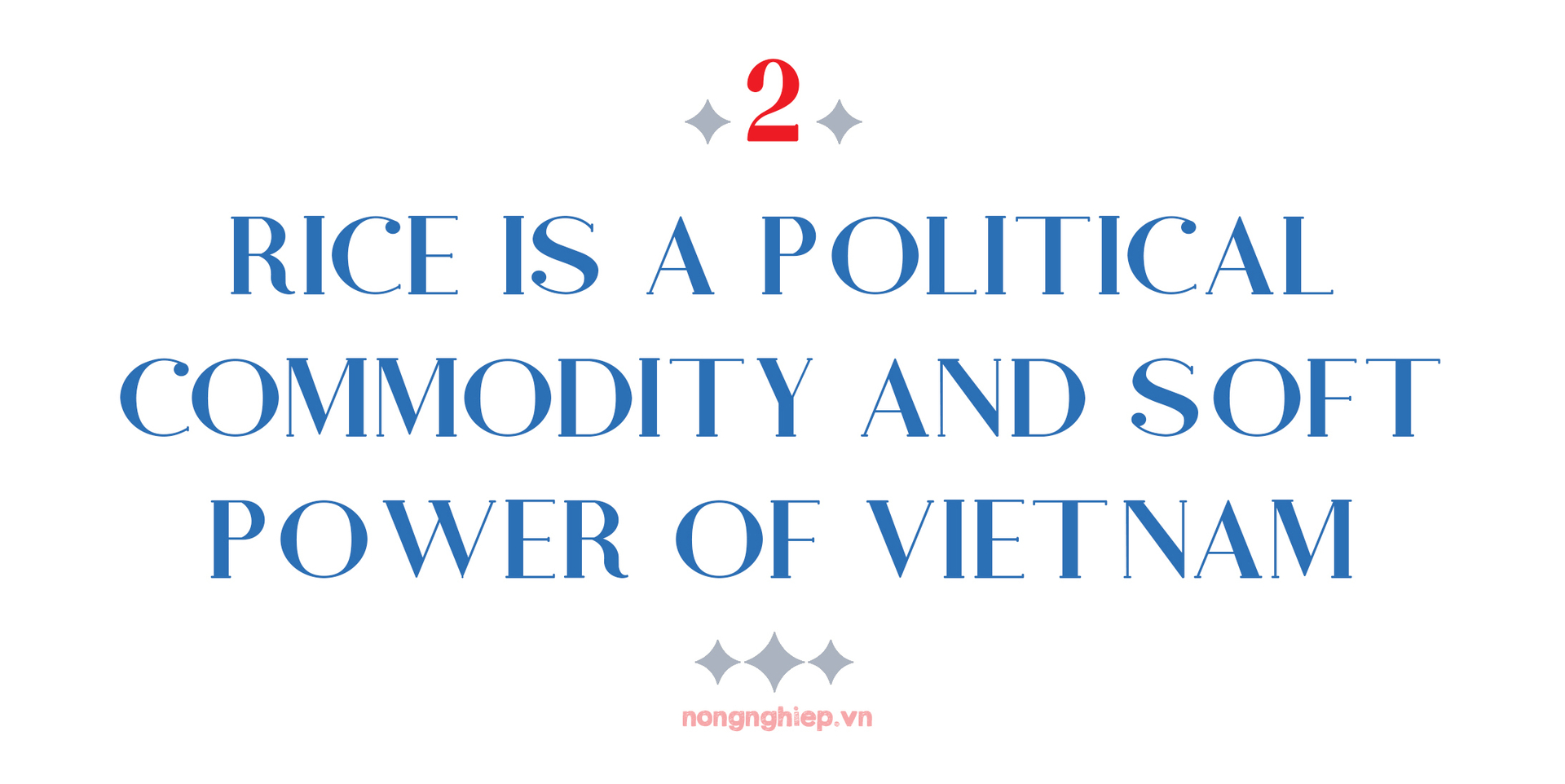
Food security is associated with political protection. The direct cause leading to uprisings and protests in 13 countries in the Arab world, overthrowing the government in Tunisia and Egypt, was the 2008 world food price crisis. In the last ten years, Africa's population has increased by about 100 million people every three years, and in just the past three years, there have been seven coups across West and Central Africa. Providing enough food for a rapidly growing population and unstable political economy is a big challenge for regional governments. Besides our country, careful observation will see political fluctuations in Myanmar, Cambodia, Thailand, etc., also associated with rice production and business policies.
To attract the support of people, most countries have to subsidize production and consumption. Importing countries like the Philippines in the period 2012 - 2017 provided price support for 5.2 million people, accounting for 28% of the total number of households at 17 pesos/kg, plus incentives for cooperative development 0.3 delivery incentives 0, 2 and drying incentives of 0.2 pesos/kg. Wholesale and retail prices are subsidized at 25 - 27 pesos/kg. Japan supports rice production at 0.4 million yen per hectare. Exporting countries like Thailand in 2019 invested 31,500 billion baht for 892,000 rice farmers when rice prices were low to ensure their income. Recently, the USA submitted to the WTO accusing India of supporting rice farmers up to 78.6% of the market value in the 2014 - 2015 crop year and 93.9% in the 2020 - 2021 crop year.

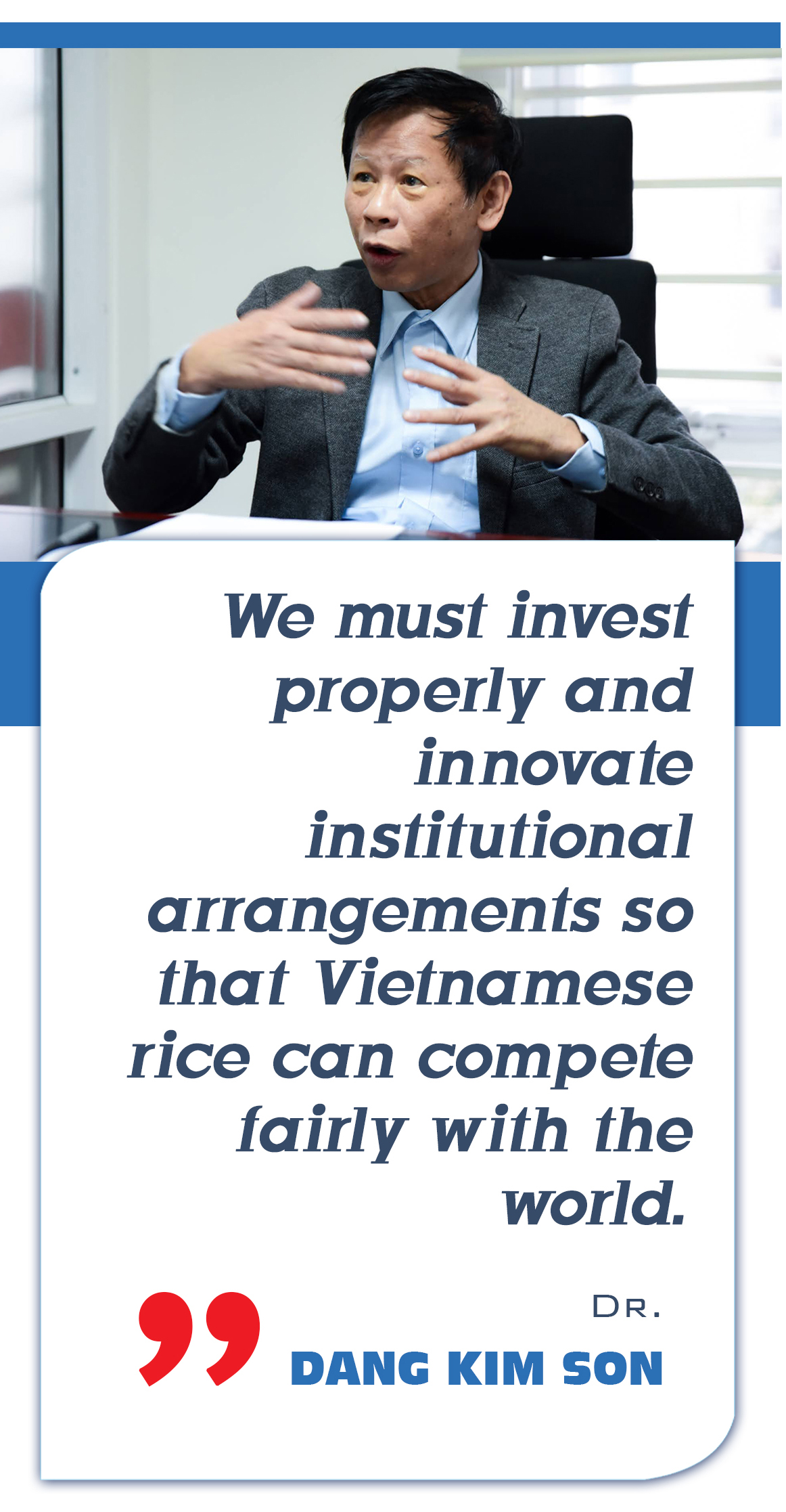
When rice becomes a political product, it is no longer a story of farmers but an act of intervention in the market by parties, governments, territories, and countries. Countries with shortages spend their budget to buy enough rice to eat, while countries with surplus intervene to compete to sell all the rice produced, causing prices in the rice market to be distorted. Subsidy policies for rice are like "opium doses." Once the government subsidizes it once, it must subsidize it forever. The next time, it must even be higher than the previous time, and the more it subsidizes, the more competitive it becomes. The country is weaker and weaker, while the people are more dependent.
Vietnam is an exception. Vietnam's rice industry is suitable and abundant; hard-working, talented business people. Irrigation infrastructure and the foundation of wet rice civilization have been built for thousands of years, including policies that create true market competitiveness for rice. Learning painful lessons from the subsidy period, when the wrong approach of "buying like robbery, selling like giving," the market was highly distorted and tied people's hands. During nearly 40 years of reform, the agricultural sector has shifted to investing in irrigation, seed production, agricultural extension, and plant protection. Still, it has hardly subsidized inputs such as fertilizers and pesticides or outputs such as preferential purchase, except for a small part of the subsidy for irrigation fees and interest rate support for temporary storage when prices drop.
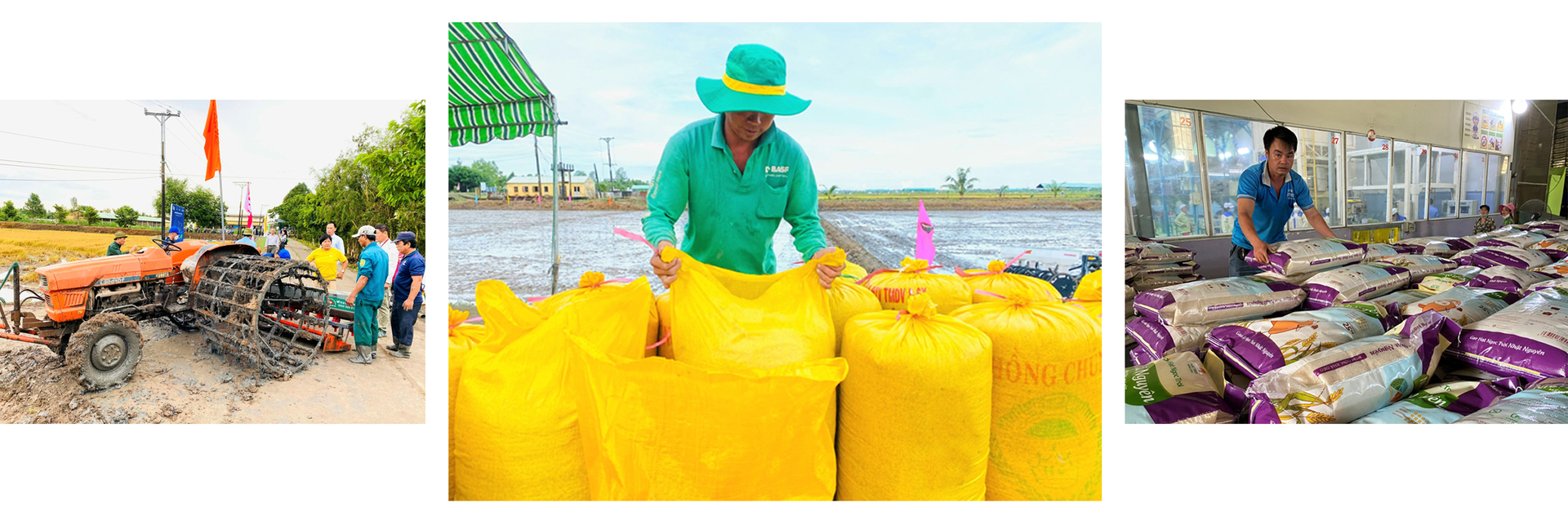
Vietnamese farmers and business people have overcome their strength and competed pretty and transparently with the market, from being unable to eat enough to become the world's third rice-exporting country. However, it is necessary to see the unfair nature of the rice market to promote this strength. If the market is balanced by policy, the rice industry is very beneficial, especially for a country with many advantages like Vietnam. During the French colonial period, when the world rice market was not heavily interfered with, the rice-growing profits from the Mekong Delta and partly from rubber in the Southeast abundantly fed the Eastern government apparatus. Ocean and made an outstanding contribution to industrializing France.
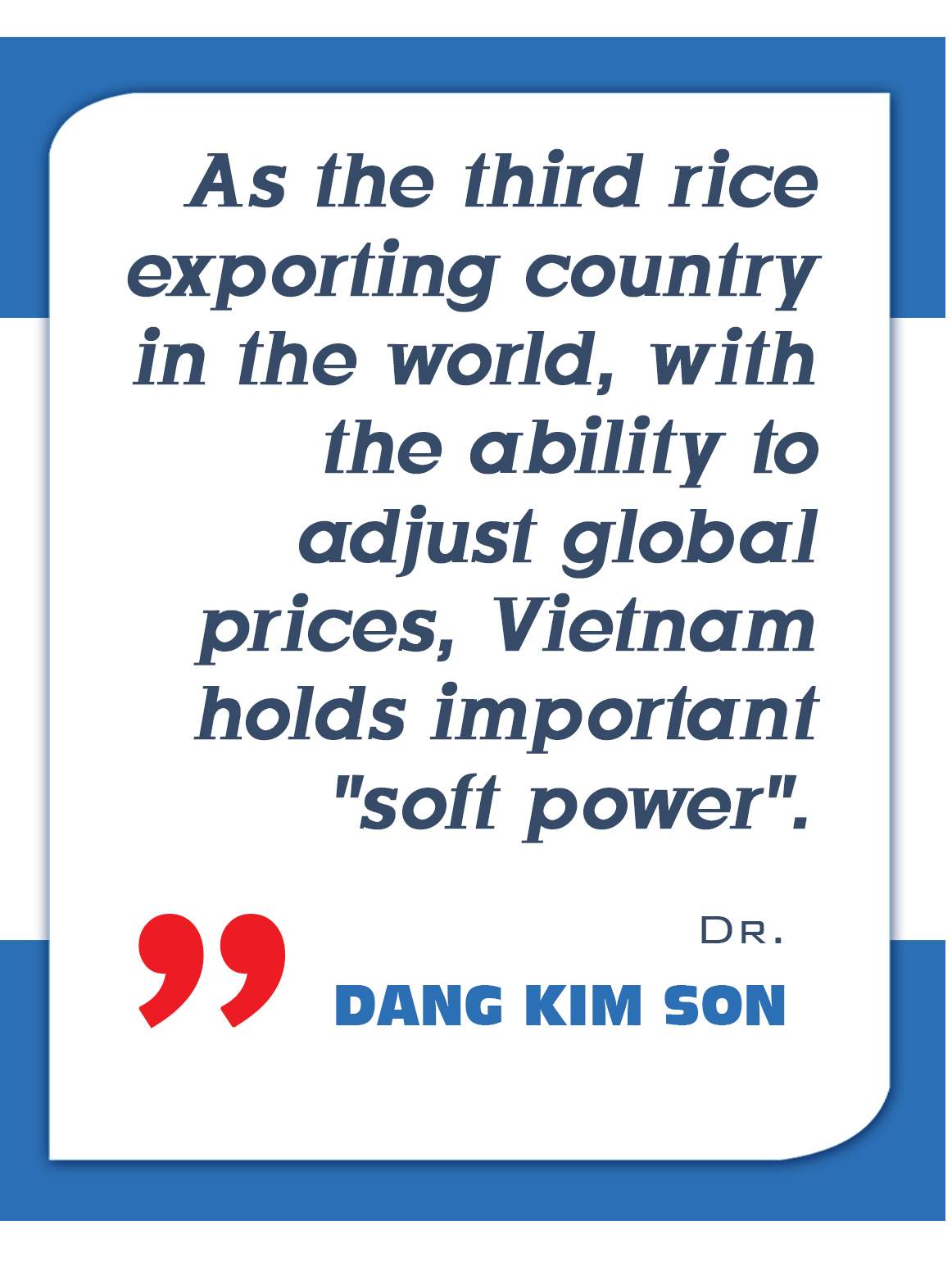
Rice is increasingly becoming a political commodity. Therefore, we must recognize this reality to, on the one hand, have reasonable policies to properly encourage producers, businesses, and localities to produce rice. There are no subsidies, but we must invest adequately and innovate institutional arrangements so Vietnamese rice can compete fairly with the world. At the same time, we also promote the advantages of rice as the soft power of a "political commodity," not treating it like a normal economic good. In the modern world, countries promote economic advantages by producing goods and creating political pressure, diplomatic strength, and defense deterrence based on artistic empathy and passion for sports, connecting technology, connecting services, and especially connecting stages in the global value chain and binding essential products such as energy, raw materials, food, minerals, etc.
Once rice is the primary food of 90% of Asia's population, and Vietnam is the third rice-exporting country in the world, with the ability to adjust global prices, we have "soft power" in our hands. Vietnamese rice exported to Africa and the Middle East indirectly stabilizes Europe and North America's political and economic stability, which is facing severe challenges. In Asia, the main rice import and export partners with Vietnam, such as China, Philippines, Indonesia, Japan, Korea, and Cambodia, are all vital partner countries with Vietnam regarding sea, islands, and territorial waters production, oil and gas exploitation, maritime trade, economic investment, border security, etc. If Vietnam ensures its "stomach," then rice farmers and entrepreneurs play an essential role in foreign affairs, transport, defense, and the economy.
Responsibility for world food security should be humanitarian, and Vietnamese farmers and businesspeople should bear the sacrifices. The most sustainable way is to ensure that rice always develops, creating strength to protect the country, attracting investment, diplomatic ties, and promoting culture. Currently, the above countries also apply the long-term strategy of relations with Vietnam. They are all significant investment countries in industry, attracting major export labor. We should refrain from buying and selling rice, even between governments, annually without moving to long-term relationships, forming specialized farming areas that apply rice varieties and standards for each country, attracting joint venture investment, and building a bonded warehouse system so governments can be completely assured of security their food from the source of Vietnamese rice.

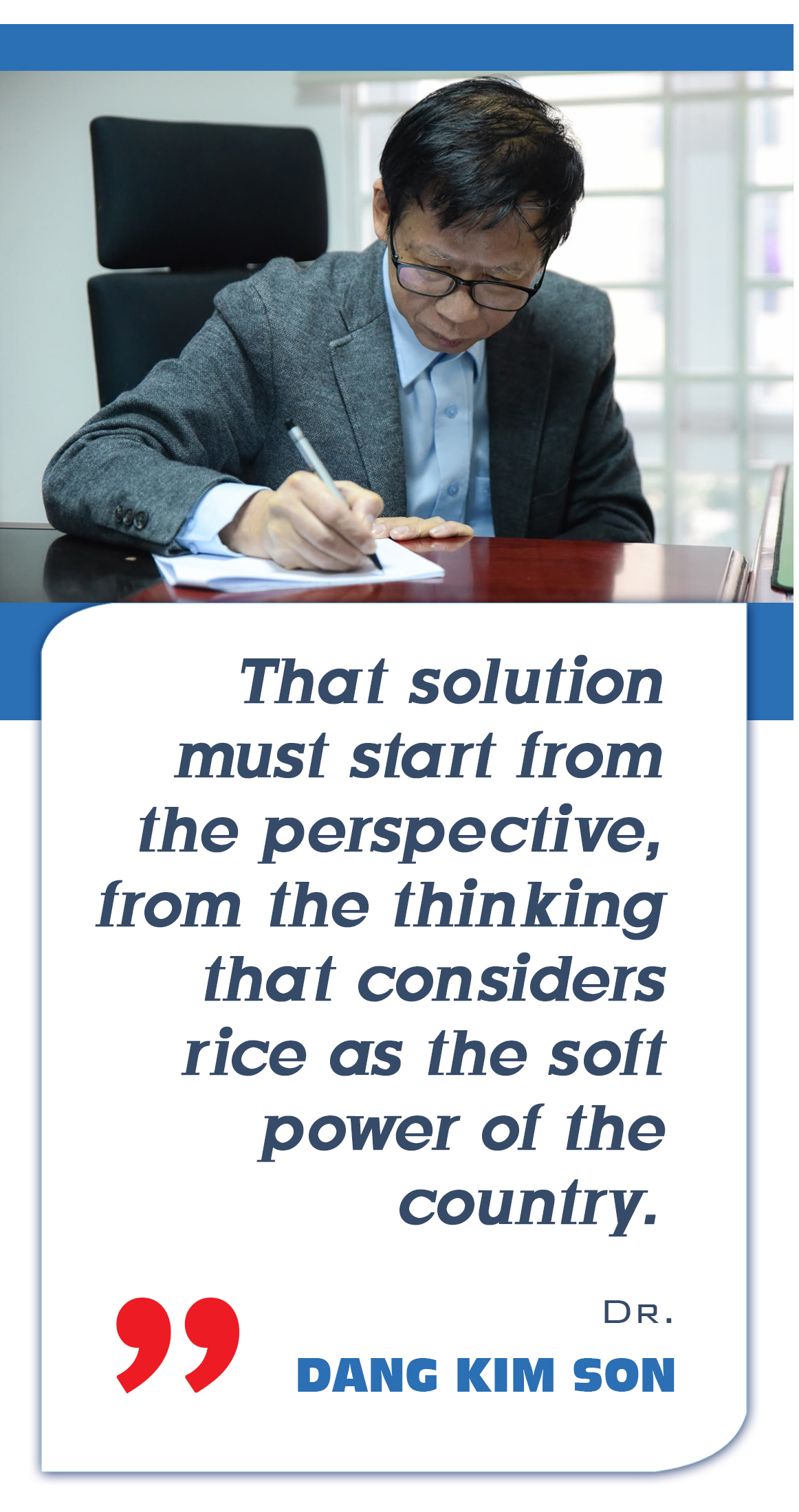
After “Khoan 10" (Resolution No 10 issued on April 5, 1988, by the Politburo of the Communist Party of Vietnam), in 2013, we untied it again by allowing diversification of production on inefficient rice land and significantly increased agricultural production income. However, how many Vietnamese businesses have grown strong thanks to rice? How many FDI enterprises invest in Vietnamese rice? What is the life of rice farmers? What is the GDP of rice-growing localities like?... That solution must start from the perspective, from the mindset of seeing rice as the soft power of the country. The State has a strategy to form specialized rice-growing areas with synchronous investment in infrastructure and services.
In particular, it is necessary to innovate breakthrough institutions and science and technology, attracting foreign investment so that Vietnamese businesses lead the game and farmers actively engage.
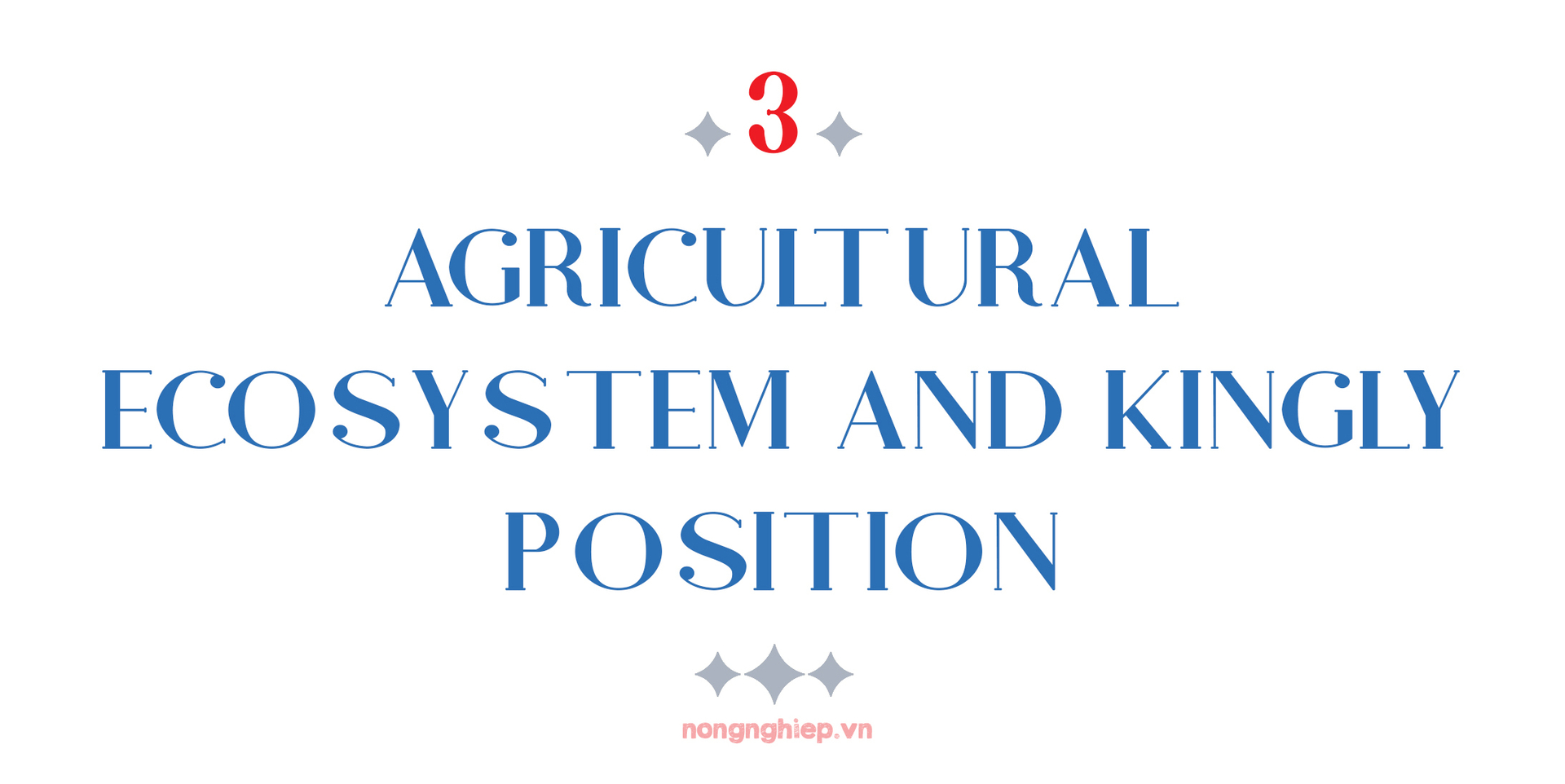
In Resolution 19, issued by the Central Committee of the Communist Party of Vietnam in June 2022, for the first time, the Communist Party of Vietnam defines agriculture as the national advantage, an assessment rarely seen in other economic sectors. There is much work to do to take advantage of that advantage. In the immediate future, it is necessary to focus on developing the critical areas of Vietnam's agriculture, namely the Central Highlands and the Mekong Delta. Our country can do agriculture everywhere, but world-class, there are only two regions above.
Second, we must choose strategic products to build specialized farming areas link chains, and invest in logistics, processing, commercial services, human training, etc., to form an agricultural economic ecosystem.
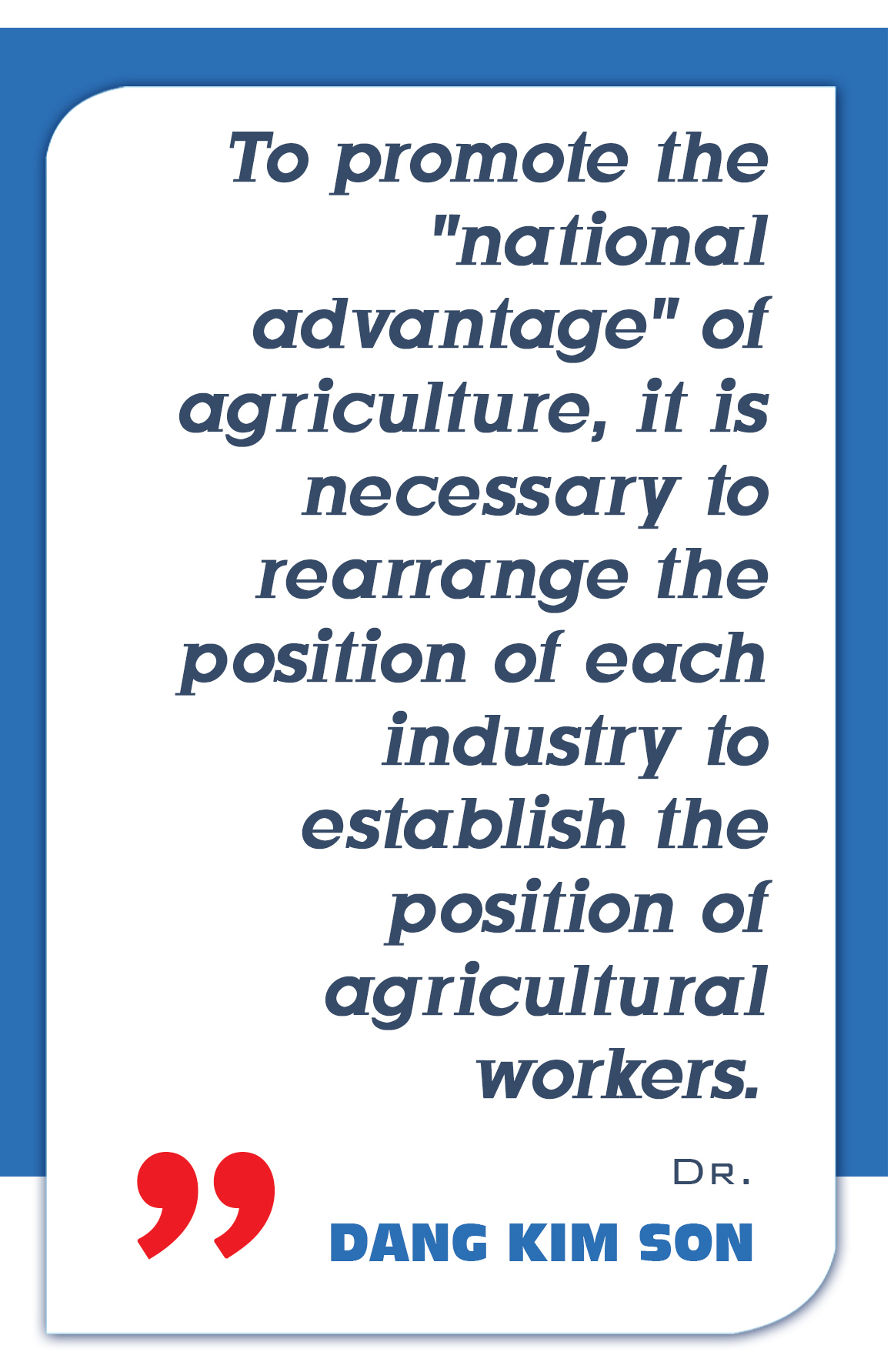
Both of these things are done successfully by advanced agricultural countries worldwide. Thailand has rice, sugar cane, and fruit trees; Brazil has coffee; The Netherlands has tulips and cow's milk; Malaysia has oil palm. Their effective methods are similar in identifying critical agricultural areas and key commodity industries and building specialized raw material production areas associated with agricultural processing industrial clusters connecting logistics centers connecting science and technology systems. The core is an ecosystem of businesses, farmer households, and cooperatives linked together in value chains. Outside is a modern market information system, monitoring the entire situation and providing feedback to the internal combat forces.
Regional councils that unite representatives of localities and relevant ministries and sectors to manage infrastructure systems cover the governance of vital agricultural regions, such as the Mekong Delta and the Central Highlands main floors and services throughout the region. Commodity councils are formed for strategic commodities such as rice, seafood, coffee, etc., including representatives of businesses, farmers, cooperatives, and related ministries. These are organizations responsible for coordinating among actors to discuss decisions on supervising the implementation of planning, investing, contributing, and managing policies to promote production, business, import, and export, solve arising problems, and build strategic goals such as branding, market development, and trade disputes.


In Vietnam, although the State, businesses, and people have spent a lot of effort linking four houses, building large sample fields, building value chains, etc., in production, industries In general and rice in particular, the production and business stages are still separate. Production is left to farmers, and purchasing from farmers is left to traders and businesses with processing factories. Many export enterprises only sign contracts to sell rice and mobilize from milling factories in a "ship-to-ship" manner. The status of export contracts with outsiders signed first, then bought rice at domestic prices up and down, so when price fluctuations occur, conflicts will arise and both parties want to pull their profits and push risks to others. Therefore, instead of collaborating, the relationship becomes confrontational.
If the current weak organization is maintained, it will create opportunities for transnational FDI corporations to move in and take over strategic agricultural industries in which Vietnam has advantages. They will build value chains according to the "manufacturing" model. The stages with the highest and most decisive added value, such as seed supply, input materials, science and technology transfer, deep processing, export, retail, etc., belong to them. Businesses and tiny farmers only enjoy a small portion of profits as labor contributors and all risks of epidemics, natural disasters, and environmental pollution. Vietnam has been accepting this situation. In many industries and agriculture, there are also problems in animal husbandry, fisheries, and coffee production.

To gain a position at home and promote the national advantage of the agricultural industry, local and industry leaders need to reorganize each sector and establish the role of farm workers in general and rice farmers in particular. Defining a specialized farming area, such as the Mekong Delta, is imperative to know where the rice, fruit trees, and seafood are. The Central Highlands must know where the coffee is, where the pepper is, where the fruit trees are, and where the forest is. Only then will it be able to synchronously invest in infrastructure, logistics, processing plants, and human resources. In specialized farming areas, it is necessary to identify and support large enterprises to lead small businesses, cooperatives, and farmers. For example, the regions of Kien Giang, An Giang, and Dong Thap are the rice bowls of the world that must invest in mechanization, cooperation, and digitization. Areas growing Japonica varieties supplied to Japan, areas growing sticky rice exported to China, and areas growing white rice sold to the Philippines must all be planned.
The second issue is rearranging the position of rice farmers. That is the position of farmers, traders, agents, cooperatives, business people, and localities responsible for the country's 3.5 million hectares of rice land. If a country has the advantage of producing rice, the people of Thai Binh, Nam Dinh, Dong Thap, Kien Giang, and An Giang, the homelands that supply rice to the whole world, must stand up and have the opportunity to develop. We can't keep going downhill like we are now. If you want to make rice rich, you must produce on a large scale, and the only way is to develop cooperatives and farms. The new Law on Cooperatives has been promulgated. Based on that, the State must have policies to invest in land, capital, and staff training..., so that development cooperatives shoulder three missions: providing input materials, purchasing agricultural products for output, and supplying agricultural products and technical services to rice farmers. Only then will we be able to withdraw labor from agriculture and transform into three groups: non-agricultural workers, intellectuals entering the digital economy, and starting businesses to become small businesses and large businesses.
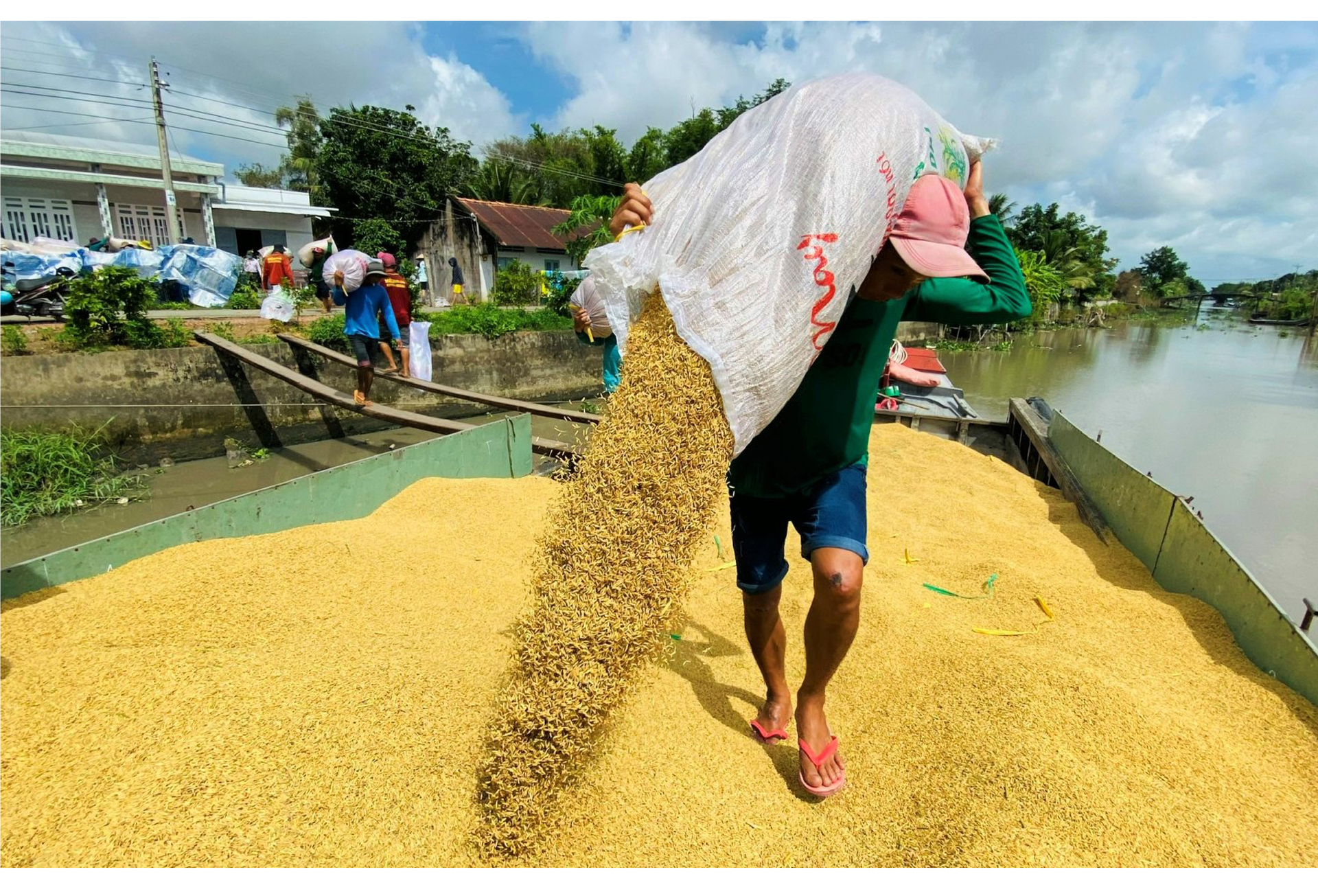
The second "rice farmer" is the business community. Farmers need cooperatives to molt, and the business community also needs associations to protect their legitimate rights and interests and to develop. The association of rice-growing enterprises will be a place to cross-link businesses together, provide public services for businesses, and represent them to contribute and evaluate policies. Exporting enterprises must associate with enterprises with processing factories, enterprises providing input materials, banks, etc.
The third "rice farmers" are rice-growing localities, which also need to link local leaders into regional links. That region of association must be, indeed, a community, like an association. We aim to organize the community from the bottom up, inside out, regarding trade, infrastructure, and services—for example, the organization of rice, fruit, and aquaculture areas.
They build and organize vertical links when there is a horizontal link between farmers, businesses, and localities. That vertical link solves the problems of how to make a specialized farming area, how to manage production, how to find the market, how to price, how to process, and how to cooperate internationally. Together, forming a specialized farming area is a vertical link, a value chain is a vertical link, and the highest is the industry council, as mentioned above.
A solid and sustainable ecosystem of agricultural institutions is a breakthrough solution to remove the main obstacles weakening the competitiveness of Vietnam's strategic commodities. It is urgent to reorganize according to the typical model of the world before Vietnam can effectively participate in the global value chain.
If we can do that, only some countries, like Vietnam, have a position as an agricultural powerhouse.
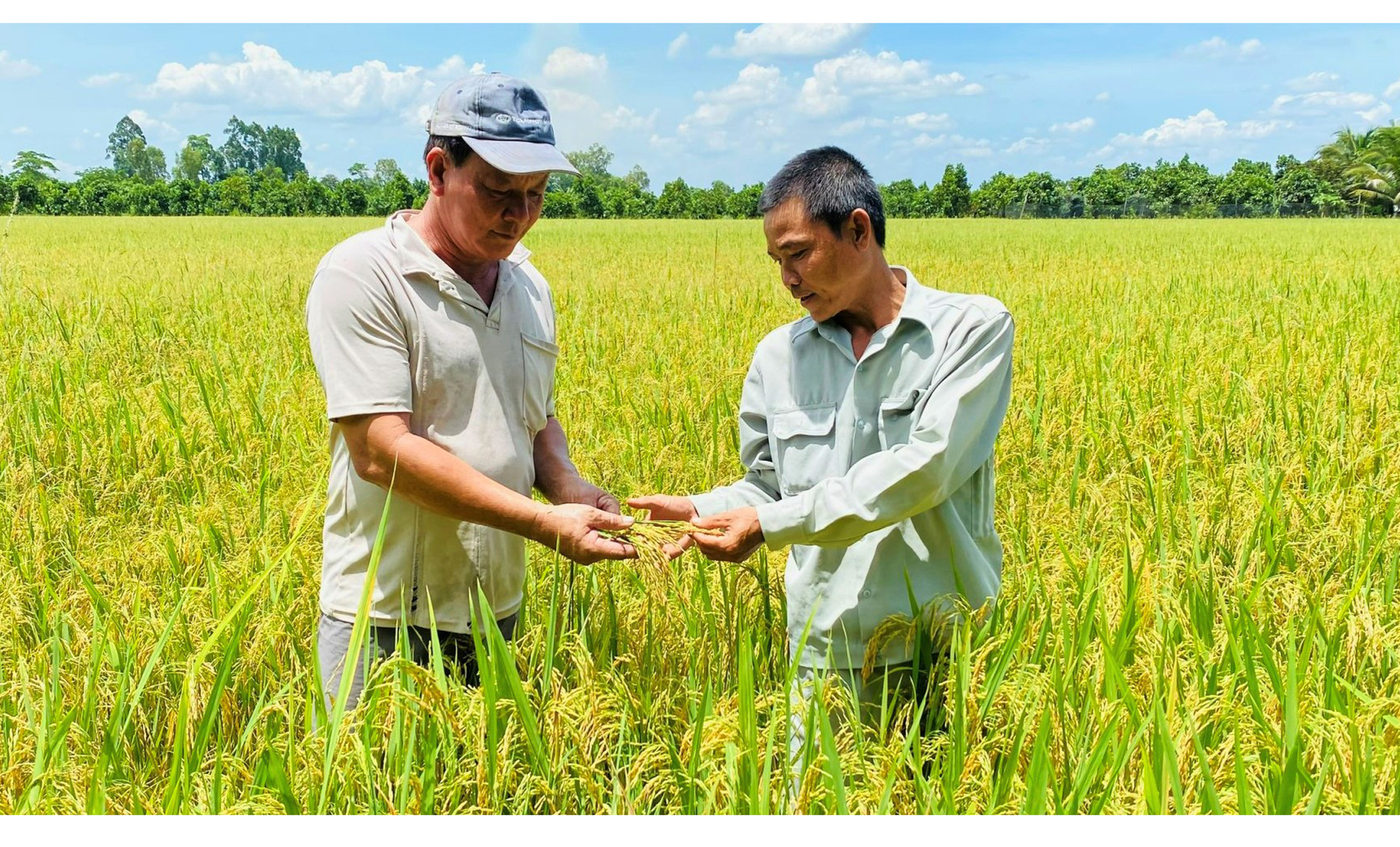
Content: Hoang Anh
Photo: Tung Dinh - Le Hoang Vu
Translated by: Pham Thi Huong Giang



